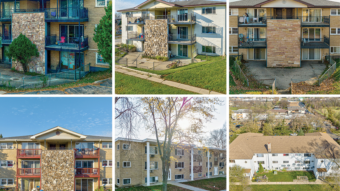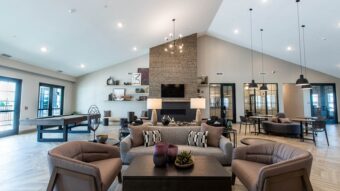Guest post by John Heine, Investors Realty, Inc.
The Brookings Institution in February came out with its rankings of how cities across the country weathered the recession. Omaha ranked number one. Economists attributed this ranking to a diverse economic mix of finance, insurance, agriculture, transportation and health care industries. In addition, Omaha has a conservative business climate and an unemployment rate near 4.3 percent. Compared to other cities, we lost few jobs.
Nationally the fundamentals of the multi-family market are strong and Omaha is no exception. High occupancy, rental increases, compressed cap rates and inexpensive financing have helped fuel the sector. The only negative side effect of the recession is that we saw a lack of construction, something illustrated in our low permit numbers from 2008 through 2010. The trailing 15-year average is 1,313 units per year. During those three years we averaged half that trailing average. This helped drive rents.
Omaha’s Pipeline
Looking at 2013, we are counting about 1,200 units currently in the construction phase that will be coming online this year and another 2,600 to 3,000 units in the planning phase for arrival in2014 and 2015. One segment of Omaha’s market that has been fun to watch is the addition of more market units to downtown. While Omaha’s occupancy rate is hovering around 94 percent, the downtown submarket is stronger.
In the downtown submarket there was an eyesore of an office building that has been transformed into a high-end 194-unit apartment building completed by Nustyle Development. The former Northern Natural Gas building is now called the Highline Building. With small floor plates and expansive windows, the views looking over the downtown Omaha skyline are exceptional. Nustyle will also be completing a neighboring 95,000-square-foot office building into another 117 market units.
This area west of downtown Omaha has a number of other projects in the works. Soon a neighborhood will be present instead of a drive-thru dead zone . Sandwiched between five Fortune 500 companies, the Old Market, Creighton University, University of Nebraska Medical Center and having quick access to the interstate system, demand for tenants to occupy these projects should be strong.
Rental Rates.
While rental rates across all sizes of apartments have ticked up since 2008, the “studio” has increased the most. According to the Institute for Real Estate Management, in 2009, the average studio rented for 85 cents per square foot. In 2012, the average studio rents for $1.07 per square foot. During this same time period, the average size of the studio unit decreased by 7 percent. People are paying more rent for less space in more desirable areas. This could be the result of our 22- to 35-year-olds having a preference of less stuff and less space but better locations.
Few Available Properties to Purchase.
Looking through listings 12 units or larger, there are currently five available that are listed and are near full occupancy. Most of these are significantly overpriced or are located in undesirable areas. There are several others listed but many of these are in need of a full renovation or have severe functional obsolescence. Investors in Omaha, like most markets, are having difficulties finding quality properties to purchase at a reasonable price.
Omaha’s strong economy will continue to help the multi-family market. The future looks strong with little signs of slowing down and we will likely have another year of steady growth.
John Heine works with Omaha’s Investors Realty, Inc. He can be reached at 402-330-8000.



